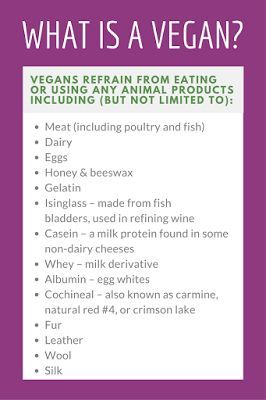
Although a vegan diet is generally considered one of the best for health, there are certain dangers to be aware of. Some research has shown that some vegans may experience depression or mental problems. A vegan diet can cause vitamin B12 deficiency. Additionally, vegans may have lower bone density. These risks can be mitigated with certain strategies.
Vegans must ensure they are getting enough calcium. Vegans can still get calcium from dark green leafy vegetable, but they also have the option of taking calcium supplements or fortified foods. Vegans should also eat plenty of nuts, seeds, and legumes. A vegan should also ensure they are getting plenty of fiber. Plant-based fiber is vital for digestive function. Vegans should avoid foods high levels of phytic acid. This acid damages small intestines, inhibits absorption of important nutrients, and can even cause intestinal inflammation.
Vegans could also be low in vitamin B12. Vitamin B12 can also not be found in eggs, meat, poultry, or meat so vegans should supplement their diets. The German government has warned against veganism because vegans may miss vital nutrients. In addition, going vegan can lead to anemia, an increase in the risk of preterm birth, and a higher risk of stroke.

According to a Polish study, vegan children have weaker bones that their meat-eating counterparts. They were also 3 cm shorter than those who ate meat. They had lower iron, vitamin D and calcium levels. Children who ate vegan food were more likely to have lower levels of vitamin B12 than those who ate meat.
According to a study published in British Medical Journal, stroke risk was 20% higher for people who eat a plant-based diet. The study was conducted over 18 year and included 48,000 participants. It also revealed that vegans have a lower chance of developing coronary heart diseases.
The study also showed no difference in the rate of cancer mortality. Researchers speculate that the vegan diets had a lower level of vitamin B12 which may explain the higher stroke rate. This vitamin is essential for the formation of red blood cells, and could be contributing to the higher stroke rates.
In addition, going vegan can lead to deficiencies in vitamin D, iron, and calcium. Vegans should eat plenty of whole grains, nuts, and iron. Vegans should also look into non-dairy products that have vitamin D added. This nutrient is vital for heart health.

It is generally healthy to go vegan. However, it is important to consider all the potential dangers before committing to a vegan diet. It is especially important to remember that a vegan diet is not healthy for pregnant women and nursing mothers. Vegans can also experience higher levels of anxiety and depression.
FAQ
What is the difference of a virus from a bacteria?
A virus is a microscopic organism that cannot reproduce outside its host cell. A bacterium, a single-celled organism, reproduces by splitting into two. Viruses measure only 20 nanometers in diameter, but bacteria is up to 1 millimeter in size.
Viruses can be spread by contact with bodily fluids containing infected substances, such as saliva, urine and semen. Bacteria is usually spread directly from surfaces or objects contaminated with bacteria.
Viruses can enter our bodies through cuts, scrapes, bites, or other breaks in the skin. They can also penetrate the nose, lips, eyes and ears, vagina,rectum, or anus.
Bacteria may enter our bodies through cuts and scrapes on our skin, burns, insect bites, and other wounds. They can also be introduced to our bodies by food, water and soil.
Viruses and bacteria both cause illness. But viruses do not have the ability to multiply within their hosts. They only infect living tissues when they cause illness.
Bacteria can cause illness by multiplying in the body. They can invade other areas of the body. That's why we need antibiotics to kill them.
What makes an antibiotic effective?
Antibiotics are medications that kill harmful bacteria. To treat bacterial infections, antibiotics are used. There are many kinds of antibiotics. Some can either be administered orally, while others may be injected. Other antibiotics can also be applied topically.
People who have been exposed are often given antibiotics. For example, if someone has had chicken pox, he or she might take an oral antibiotic to prevent shingles later on. Or, if someone has had strep throat, he or she might receive an injection of penicillin to help prevent pneumonia.
A doctor should give antibiotics to children. Children are more likely to experience side effects than adults from antibiotics.
Diarrhea is one of the most common side effects of antibiotics. Other possible side effects include stomach cramps, nausea, vomiting, allergic reactions, headaches, dizziness, and rashes. These side effects are usually gone once the treatment has finished.
Exercise: Is it good or bad for immunity?
Exercise is good exercise for your immune system. Your body makes white blood cells that fight infections when you exercise. You also get rid toxins. Exercise is a great way to prevent diseases such as cancer and heart disease. Exercise can help reduce stress.
But, too much exercise can lead to a weakening of your immune system. If you work out too hard, your muscles become sore. This can cause inflammation and swelling. In order to fight off infection, your body must produce more antibodies. The problem is that these extra antibodies can cause allergies and autoimmune disorders.
So, don't overdo it!
Statistics
- WHO recommends reducing saturated fats to less than 10% of total energy intake; reducing trans-fats to less than 1% of total energy intake; and replacing both saturated fats and trans-fats to unsaturated fats. (who.int)
- Extra virgin olive oil may benefit heart health, as people who consume it have a lower risk for dying from heart attacks and strokes according to some evidence (57Trusted Source (healthline.com)
- WHO recommends consuming less than 5% of total energy intake for additional health benefits. (who.int)
- nutrients.[17]X Research sourceWhole grains to try include: 100% whole wheat pasta and bread, brown rice, whole grain oats, farro, millet, quinoa, and barley. (wikihow.com)
External Links
How To
How to Live a Healthful Lifestyle
A healthy lifestyle is one where you are able to maintain your weight, your health and your fitness level. Healthy living means eating right, exercising regularly, getting enough rest, and staying away from harmful substances like alcohol, tobacco, cocaine, and drugs. A healthy lifestyle will help you feel happy and fit. A healthy lifestyle can help reduce your risk of developing chronic diseases such as heart disease, strokes, diabetes, cancer and osteoporosis.
The goal of this project is to give a step-by–step guide on how you can live a more healthy life. The first part of the project consisted of writing the introduction, which explains what a healthy lifestyle is, why people should adopt a healthy lifestyle and who we are. Then, I wrote the body paragraphs, which consist of different tips on how to keep a healthy lifestyle. Finally, I wrote my conclusion. It summarizes the entire article and gives additional resources if required.
This assignment helped me learn how to write a clear and concise paragraph. Additionally, I learned how organize my thoughts into topic sentences and supporting information. Furthermore, I was able to improve my research skills by being able to identify specific sources and correctly cite them. I also learned how to write with proper grammar.